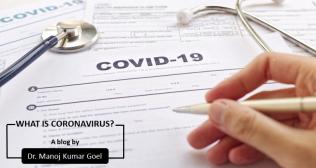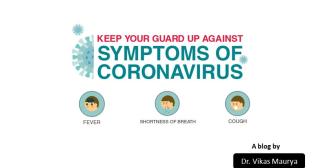
Obstructive Sleep Apnea: Essential Information, Risks, and Preventive Measures
A good night's sleep is one of the fundamental pillars of a healthy life. It is the time when our bodies repair, our minds process information, and our energy reserves are replenished. However, for millions of people, this restorative process is constantly interrupted by a serious and often undiagnosed medical condition: obstructive sleep apnea (OSA). This common disorder turns the simple act of breathing during sleep into a nightly struggle, leading to a cascade of health problems that extend far beyond simple fatigue.
More than just loud snoring, OSA is a significant sleep disturbance characterized by repeated pauses in breathing. Understanding the obstructive sleep apnea symptoms, the serious risks it poses, and the effective treatments available is the first and most critical step toward reclaiming restful sleep and protecting your long-term health. Recognizing this condition is not just about feeling more awake; it is about safeguarding your entire well-being.
What Is the Mechanism Behind Obstructive Sleep Apnea?
The term "apnea" literally means the cessation of breath. In obstructive sleep apnea, these pauses in breathing are caused by a physical blockage of the upper airway. Here is what happens:
As you fall asleep, the muscles in your body relax, including the soft tissues at the back of your throat, such as the soft palate, tonsils, and tongue.
In individuals with OSA, these muscles can relax to the point where they collapse and block the airway, either partially (a hypopnea) or completely (an apnea).
Breathing stops for 10 seconds or longer. During this time, the level of oxygen in your blood drops.
Your brain senses this dangerous drop in oxygen and sends a panic signal, briefly waking you up just enough to reopen your airway. This awakening is often so brief that you have no memory of it, and it is usually accompanied by a loud gasp, snort, or choking sound.
This cycle can repeat itself hundreds of times per night, preventing the body from ever reaching the deep, restorative stages of sleep. OSA is the most prevalent of the different types of sleep apnea; the other, less common type is Central Sleep Apnea, which is caused by the brain failing to send the proper signals to the muscles that control breathing.
Recognizing the Key Symptoms
Because the most dramatic events of OSA happen while a person is asleep, many people are unaware they have it. Often, it is a bed partner who first notices the signs. The symptoms can be divided into nighttime and daytime categories.
Nighttime Symptoms
Loud, Persistent Snoring: While not everyone who snores has OSA, very loud and disruptive snoring is a primary indicator.
Witnessed Apneas: A bed partner may notice that the person stops breathing for periods, followed by a gasp or snort.
Gasping or Choking: Abruptly waking up with a sensation of choking or being out of breath.
Nocturia: Waking up frequently during the night to urinate.
Restless Sleep and Night Sweats: Tossing and turning throughout the night and waking up with damp sheets.
Daytime Symptoms
Excessive Daytime Sleepiness: This is the most common daytime symptom, feeling overwhelmingly tired despite having spent enough time in bed.
Morning Headaches: Waking up with a headache is a frequent complaint, caused by low oxygen levels during the night.
Difficulty Concentrating: Trouble with memory, focus, and completing tasks.
Irritability and Mood Swings: Feeling irritable, impatient, or depressed without a clear reason.
The Serious Health Risks of Untreated OSA
The consequences of untreated obstructive sleep apnea go far beyond just feeling tired. The repeated drops in oxygen levels and the stress of frequent awakenings put enormous strain on the body's systems, significantly increasing the risk of serious long-term health problems.
Cardiovascular Disease: OSA is strongly linked to high blood pressure (hypertension), as the body's stress response during apnea events constricts blood vessels. This strain increases the risk of heart attacks, strokes, and abnormal heart rhythms (arrhythmias).
Type 2 Diabetes: Sleep apnea can contribute to insulin resistance, a condition where the body's cells do not respond properly to insulin, which is a major risk factor for developing type 2 diabetes.
Metabolic Syndrome: This is a cluster of conditions, including high blood pressure, high blood sugar, excess body fat around the waist, and abnormal cholesterol levels, all of which are made worse by OSA.
Complications with Surgery: OSA poses risks during and after surgery, particularly when sedation and anaesthesia are involved, as these can further relax the airway. It is crucial to inform your surgeon if you have sleep apnea.
The Path to Diagnosis and Treatment
If you suspect you have sleep apnea, the first step is to consult a doctor. The gold standard for diagnosis is an overnight sleep study, called a polysomnography, which can be done in a sleep lab or sometimes with a home sleep apnea test. This study monitors your brain waves, heart rate, breathing patterns, and blood oxygen levels to confirm the diagnosis and determine its severity.
Once diagnosed, there is a wide range of effective obstructive sleep apnea treatment options. A comprehensive sleep disorder treatment plan is tailored to the individual.
Lifestyle Changes and Conservative Measures
Weight Loss: For overweight individuals, losing even a small percentage of body weight can significantly reduce the severity of OSA.
Positional Therapy: Some people only have apnea when they sleep on their backs. Devices that encourage side-sleeping can be helpful.
Avoiding Alcohol and Sedatives: These substances relax the throat muscles and can worsen the condition.
Continuous Positive Airway Pressure (CPAP)
CPAP therapy is the most common and effective osa treatment. It involves wearing a mask over your nose or mouth while you sleep. The mask is connected to a small machine that delivers a continuous stream of air, which acts as a splint to keep your airway open and prevent it from collapsing.
Oral Appliance Therapy
For mild to moderate OSA, a custom-fit oral appliance, similar to a mouthguard, can be an alternative to CPAP. These devices work by repositioning your lower jaw and tongue to help keep your airway open.
Surgical Options
In cases where other treatments are not effective or tolerated, sleep apnea surgery may be an option. The goal of obstructive sleep apnea surgery is to enlarge the airway by removing or repositioning excess tissue. This is a more invasive option and is reserved for specific anatomical issues.
Protecting Your Sleep, Protecting Your Health
Obstructive sleep apnea is a serious medical condition, but it is also a highly treatable one. Recognizing the symptoms and seeking a diagnosis is a critical act of self-care that can dramatically improve your quality of life and reduce your risk of developing severe long-term health problems.
If you or a loved one are experiencing the signs of a chronic sleep disturbance, do not dismiss it as just poor sleep. Consulting with a healthcare professional can be the first step on a journey back to the restful, restorative sleep your body needs to thrive.
Frequently Asked Questions
Q1. What is the main difference between obstructive and central sleep apnea?
Ans. Obstructive sleep apnea is a mechanical problem caused by the physical blockage of the airway. Central sleep apnea is a neurological problem where the brain fails to send the proper signals to the muscles that control breathing, so there is no effort to breathe.
Q2. Can children have obstructive sleep apnea?
Ans. Yes, children can have OSA. In kids, it is most commonly caused by enlarged tonsils and adenoids. Symptoms can include loud snoring, mouth breathing, and even behavioural problems that can be mistaken for ADHD.
Q3. Is snoring always a sign of sleep apnea?
Ans. No, not everyone who snores has sleep apnea. Simple snoring does not involve pauses in breathing or drops in blood oxygen levels. However, loud and habitual snoring, especially when accompanied by gasping or choking sounds, is a strong indicator that you should be evaluated for OSA.
Q4. How does a sleep study work?
Ans. During an in-lab sleep study, you will sleep in a private room while sensors attached to your body monitor various functions. These include your brain waves (EEG), heart rate (EKG), breathing effort, airflow, and blood oxygen levels. The data is collected and analyzed by a sleep specialist to diagnose any sleep disorders.
Q5. Will I have to use a CPAP machine forever?
Ans. For many people, CPAP is a long-term therapy. However, if your sleep apnea is caused by excess weight, significant weight loss can sometimes reduce the severity of OSA to the point where CPAP is no longer needed. It is essential to have a follow-up sleep study to confirm this before stopping treatment.



















